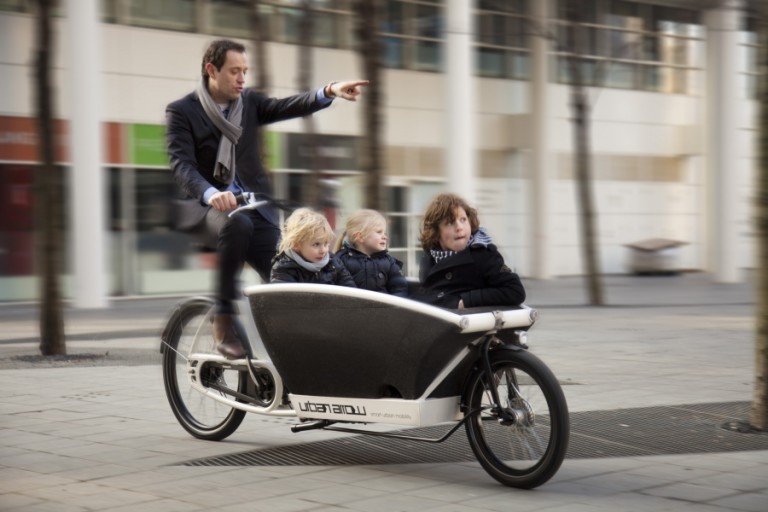
On 21st April the so far biggest Cargo Pedelec Test in Europe starts in Tanna (Thuringia). The test is carried out by ExtraEnergy. Here you find a preview and all registered test bikes at a glance (some more might still be added). Futher registrations are still possible, find info and contact options here.
— zur deutschen Version des Artikels hier —
Backgorund
Due to their electric assistance Cargo Pedelecs are attractive to more users than normal Cargo Bikes and also suitable for and more usecases. But how about product quality, how do different models perform in market comparison? What can buyers use as orientation?
ExtraEnergy has been testing Pedelecs and Light Electric Vehicles (LEV) since 1992. The test conditions are highly standardized and internationally recognized. In 2013/2014 there was already a special Cargo Pedelec test done in cooperation with the project „Cargo on Bikes“ by the German NGO VCD. In this second edition Arne Behrensen/Cargobike.jetzt and Wasilis von Rauch/e-Rad Hafen are involved as external experts. Up to now there are eleven test bikes and a prototype registered – that is twice as much as 2013! As mentioned above, you can still register as a manufactuerer, contact options here.
ExtraEnergy – Testing method
All tests are done under real driving conditions (RDE – blink, blink car industry ;-)). Test drivers ride the Cargo Pedelecs on a defined route, the ExtraEnergy test track. Every bike will have to do the route without payload and with 50 Kilograms (kgs.), that needs to be securly fastened on the bike. So beeing able to transport 50 kgs is a minimum requirement for the test.
ExtraEnergy measurement technology
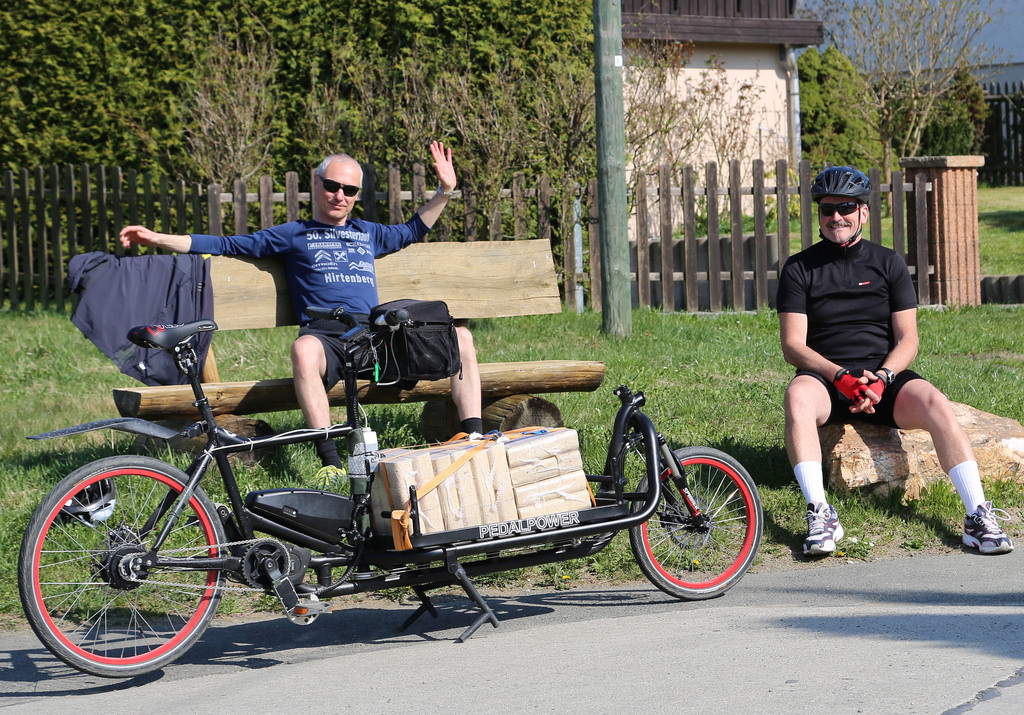
All test bikes will be equipped with measurement equipment that collects data on velocity, energy use and human pedaling power. Thereby the support factor (U-Faktor) and the electric scope of the bike can be calculated. The test drivers individually assess driving charateristics. Last but not least a usability/handling-test of of the bikes and its add on features like boxes etc. complete the test.
All bikes are grouped into four product groups. Each product group is separated by certain exclusion criteria (e.g. minimum payload) and a different hierarchy of customer wishes (these are e.g. high speed, low price etc.). To what extend a product fulfills the set of customer wishes of a product group is calculated by the QFD method. The groups are: (1) Family Pedelec (focus on kids transport), (2) Business Pedelec (focus on velocity), (3) Cargo Pedelec up to 120 kgs and (4) above 120 kgs.
You can find a more detailed description of the testing procedure in this online brochure (link leads you to page 66 of ExtraEnergy test booklet pages 66-105 explain are relevant)
Press day and relase of results
All results will be published just before the EUROBIKE end of
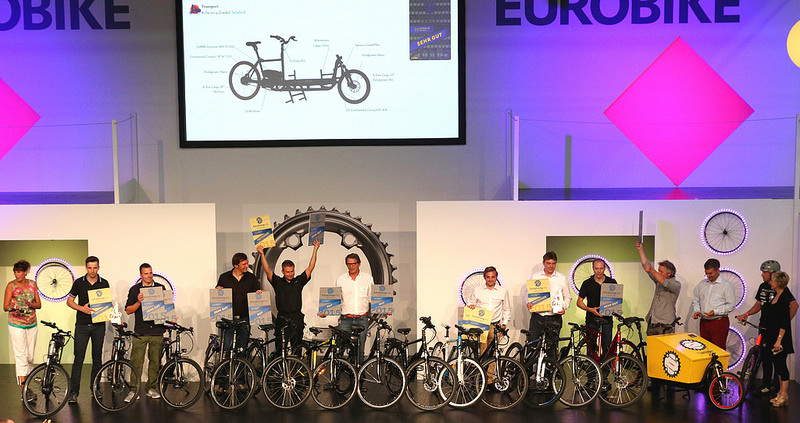
August 2016. The test report will be available in German, English and Chniese (see previous issues here). During the Eurobike there will also be the official ExtraEnergy winners and awards ceremony. The winners and a choice of outstanding products will be presented at the ExtraEnergy exibition area.
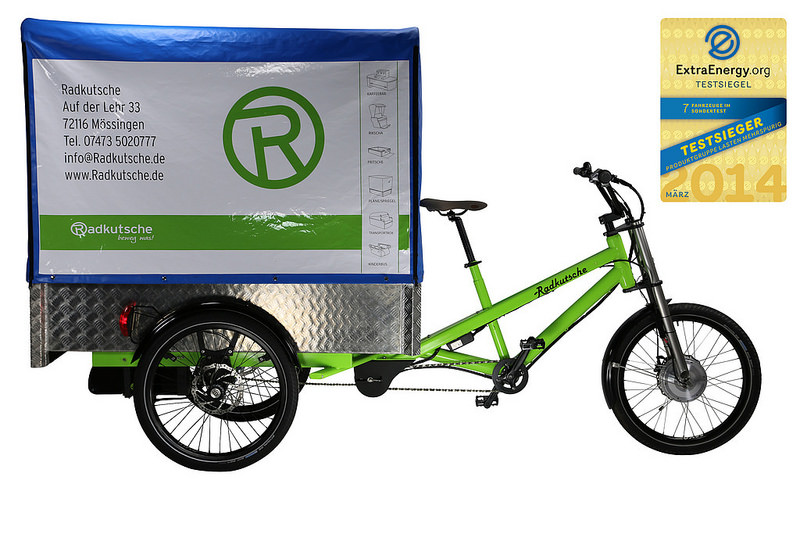
During the test on April 27th there is also a press and experts‘ day in Tanna. The test bikes and the ExtraEnergy test universe will be presented to the expert public. For requests and registration please contact: test@extraenergy.org
The Bikes
(unfortunately this blog has no gallery function at the moment, so all bikes come one after another):
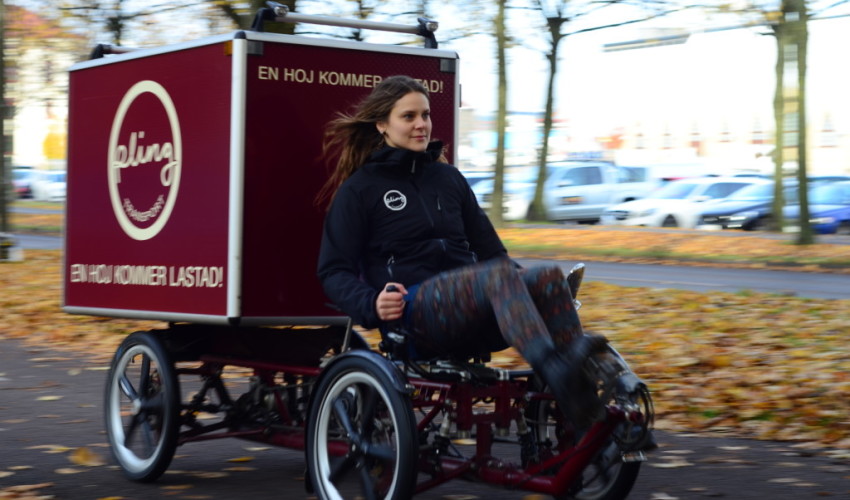
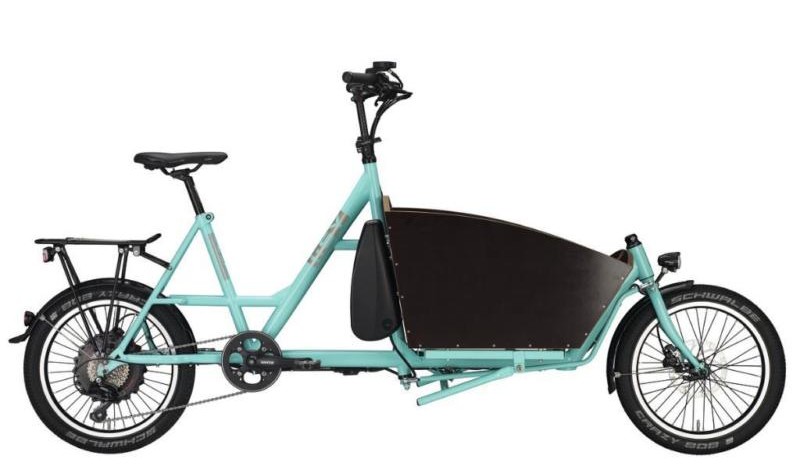
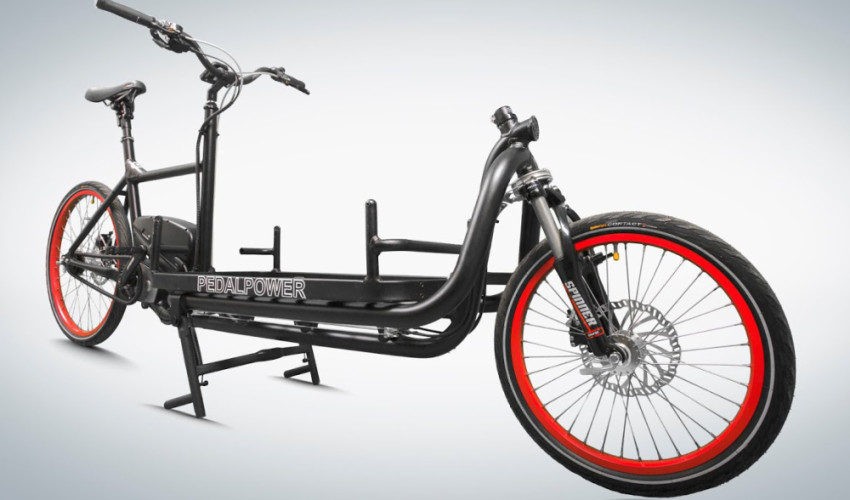
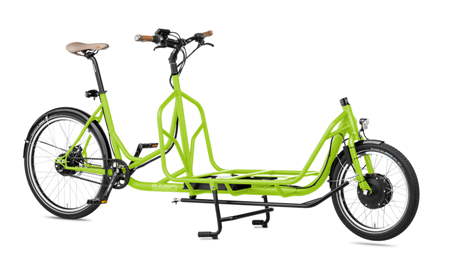
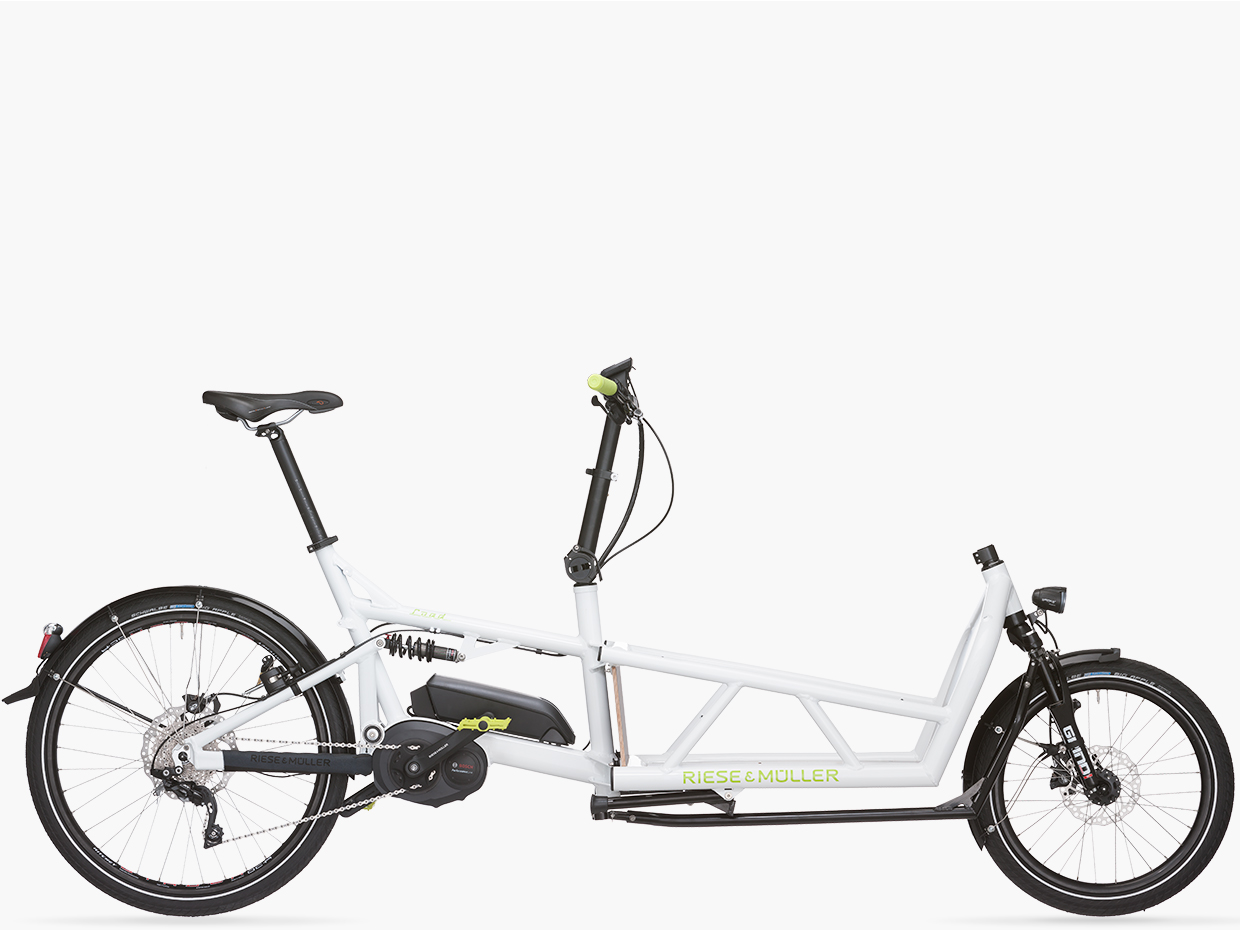
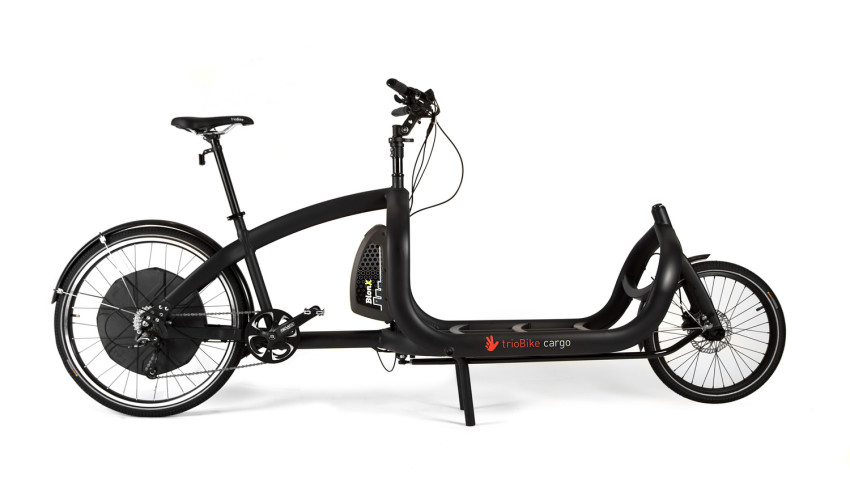
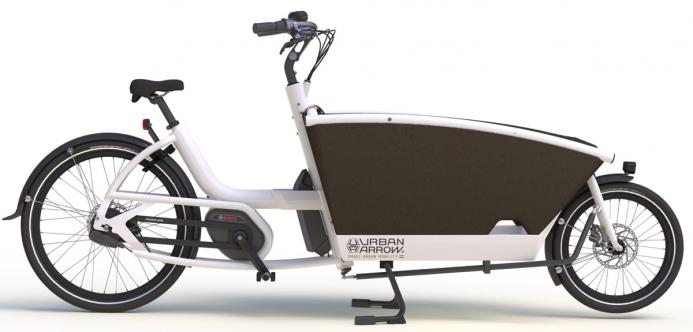
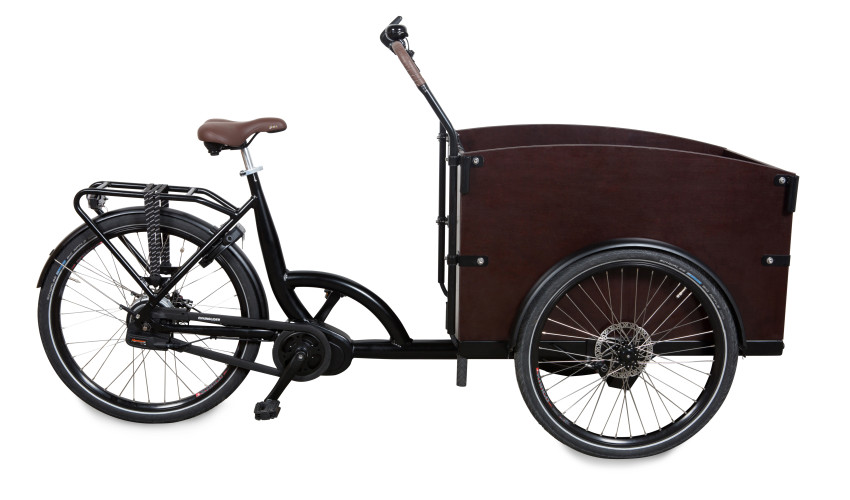

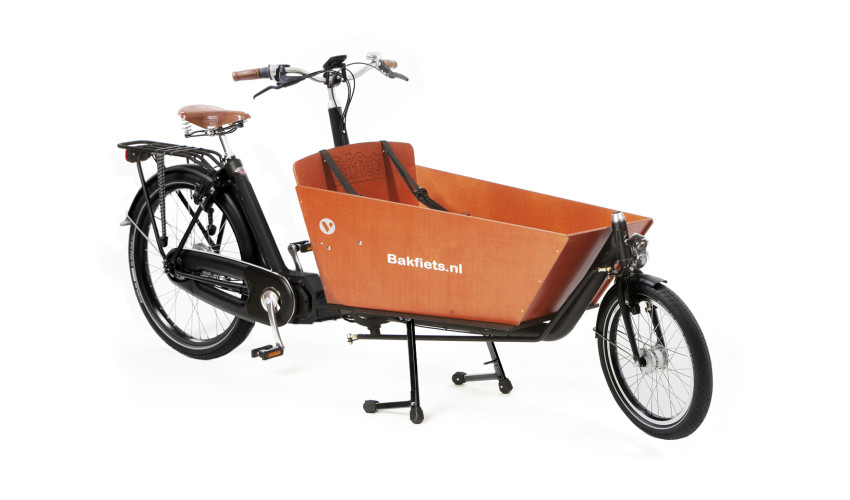
More e-Rad Hafen on Cargo Pedelecs
- Vorstellung der Testfahrer und erste Eindrücke vom Test
- e-Rad Hafen cargo bike report from Eurobike 2014 (in english)
- Cargo-Bikes in professioneller Anwendung
- Merkel wants to replace trucks with cargo bikes
- Lastenräer auf der IAA Nutzfahrzeuge 2014
- Merkel wants to replace trucks with cargo bikes (2014)
- Besuch bei XYZ Spaceframe Vehicle
- Bericht zu yuba el mundo und e-Bullit
- Bericht zum uma zooma
- Campen mit Cargobike
Most read
- e-Rad Hafen Kauftipps
- Brose, Binova, Yamaha und TranzX: Mittelmotoren im Vergleich Teil 2
- Bosch, Panasonic und Impulse – Mittelmotoren im Vergleich (aktuell zur Eurobike 2015)
- E-Räder bis 1000€ – Schnäppchen von Fehlkauf unterscheiden!
- BionX, Alber, Panasonic und Ortlinghaus – Heckmotoren im Vergleich
